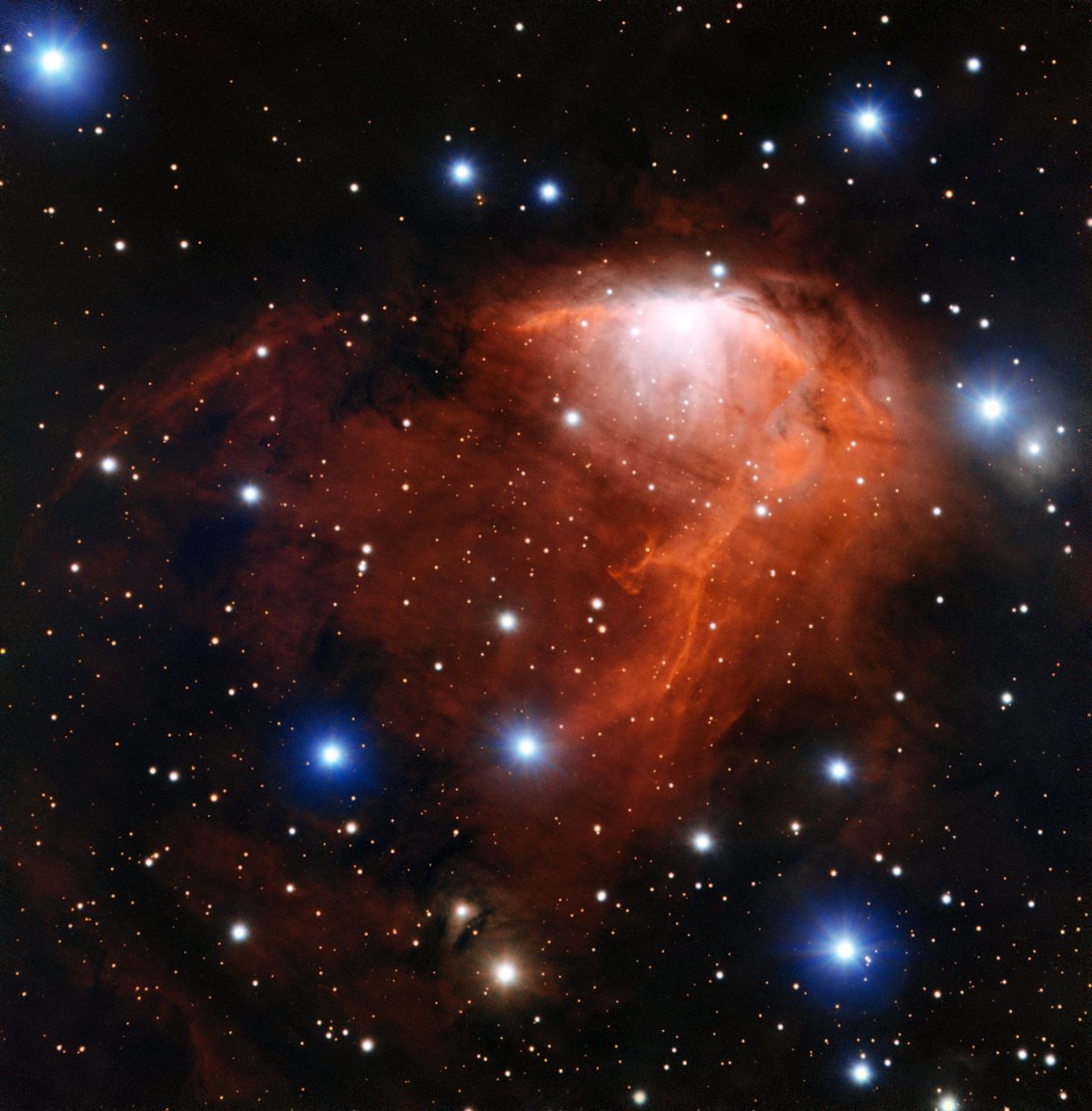

Using the Chile-based ‘Very Large Telescope’ (VLT), astronomers from the European Southern Observatory (ESO) have captured a stunning new image of RCW 34 (otherwise known as Gum 19)—a star forming region located approximately 22,000 light-years away from Earth, toward the constellation of Vela.
This new version accentuates the glowing red cloud of hydrogen gas, and the bright, blue stars (they appear so much larger than they actually are because of their closer proximity to us) providing contrast. Other stars also pervade the medium, helping spark the flame that sets the gas alight. This process is gradual; it starts when parts of the cloud collapse, triggering the mechanism that brings stars to life. As they progress from protostars, into full-blown main-sequence stars, the temperatures of their gaseous cocoons rise, ultimately expanding through the cooler gas near the edge. The astronomers explain,
Once the heated hydrogen reaches the borders of the gas cloud, it bursts outwards into the vacuum like the contents of an uncorked champagne bottle—this process is referred to as champagne flow. But the young star-forming region RCW 34 has more to offer than a few bubbles; there seem to have been multiple episodes of star formation within the same cloud.
Hydrogen is treasured by cosmic photographers because it glows brightly in the characteristic red colour that distinguishes many nebulae and allows them to create beautiful images with bizarre shapes. It is also the raw material of dramatic phenomena such as champagne flow. But ionised hydrogen also has an important astronomical role: it is an indicator of star-forming regions. Stars are born from collapsing gas clouds and therefore abundant in regions with copious amounts of gas, like RCW 34. This makes the nebula particularly interesting to astronomers studying stellar birth and evolution.
Vast amounts of dust within the nebula block the view of the inner workings of the stellar nursery deeply embedded in these clouds. RCW 34 is characterised by extremely high extinction, meaning that almost all of the visible light from this region is absorbed before it reaches Earth. Despite hiding away from direct view, astronomers can use infrared telescopes, to peer through the dust and study the nest of embedded stars.
Looking behind the red colour reveals that there are a lot of young stars in this region with masses only a fraction of that of the Sun. These seem to clump around older, more massive stars at the centre, while only a few are distributed in the outskirts. This distribution has led astronomers to believe that there have been different episodes of star formation within the cloud. Three gigantic stars formed in the first event that then triggered the formation of the less massive stars in their vicinity.
This image uses data from the FOcal Reducer and low dispersion Spectrograph (FORS) instrument attached to the VLT, which were acquired as part of the ESO Cosmic Gems programme.
[Reference: ESO]
See a larger image here.